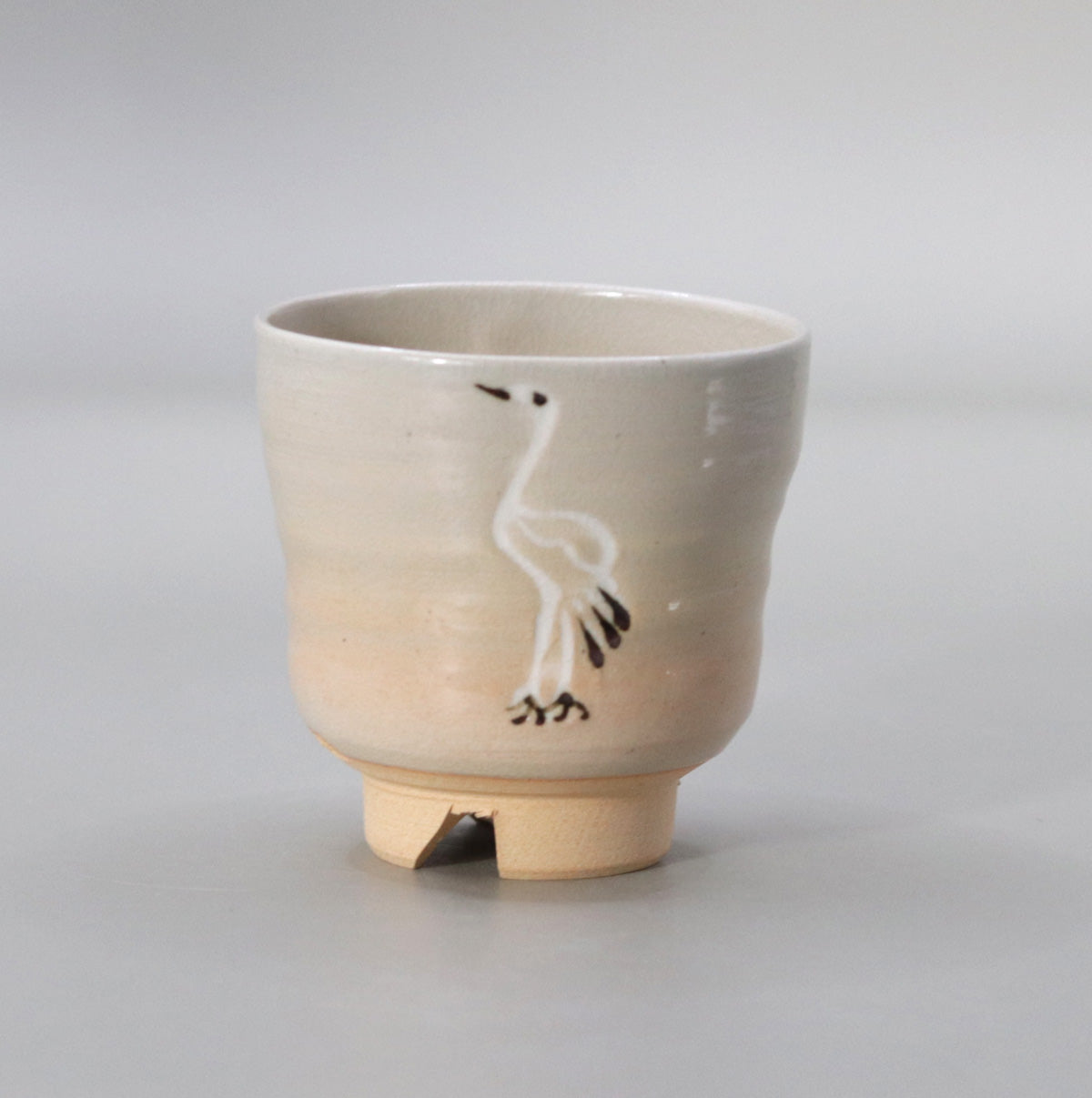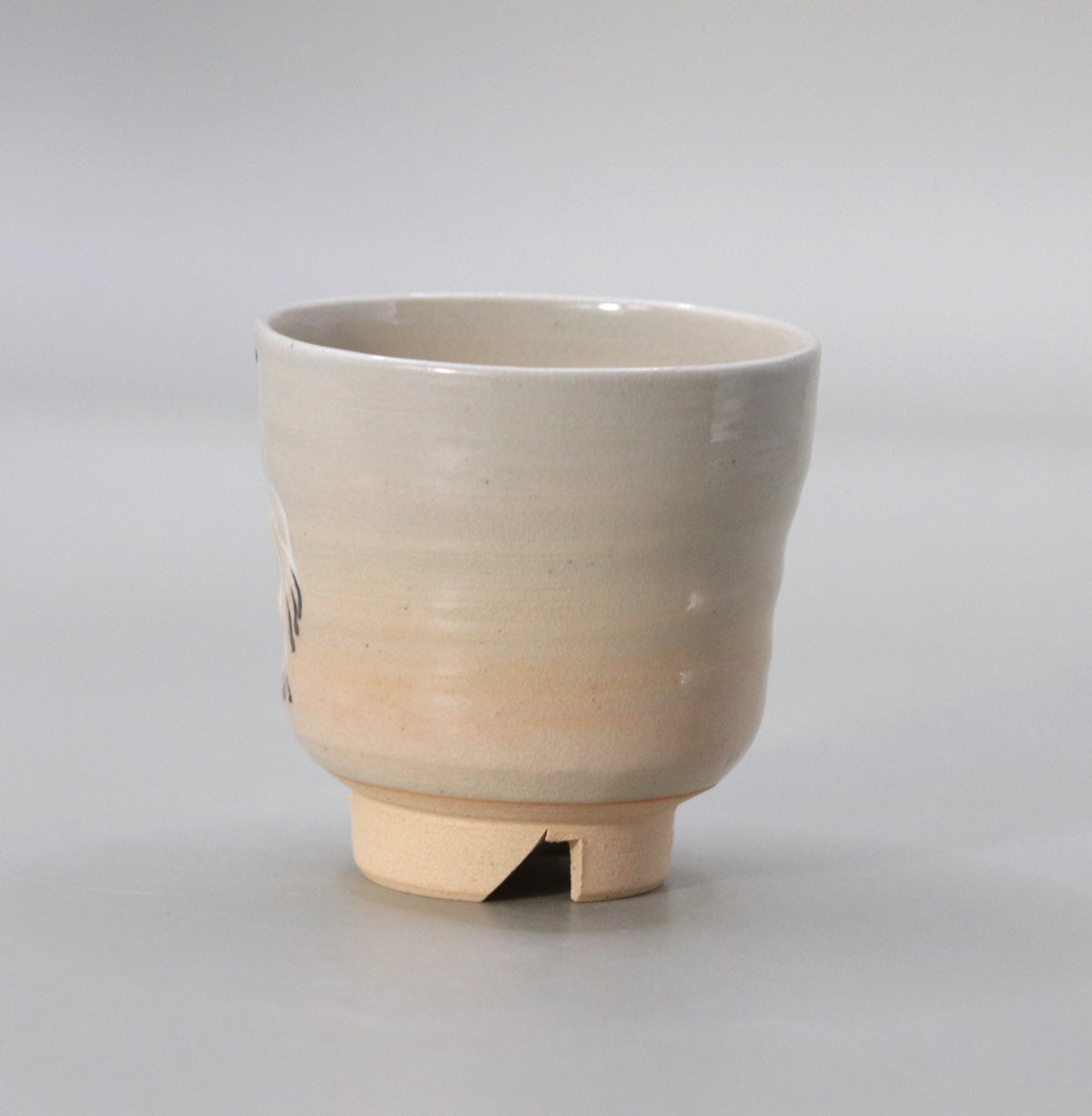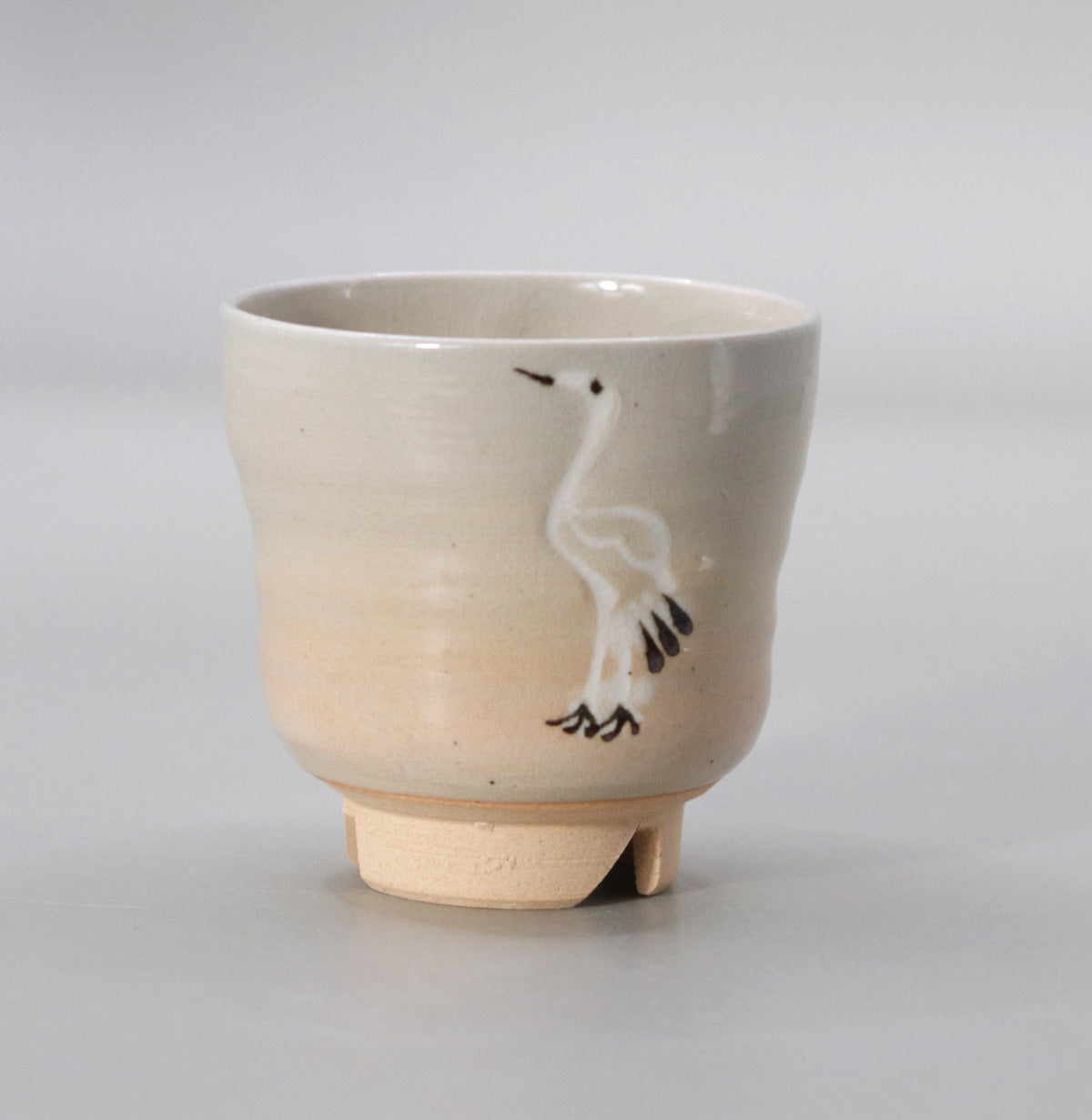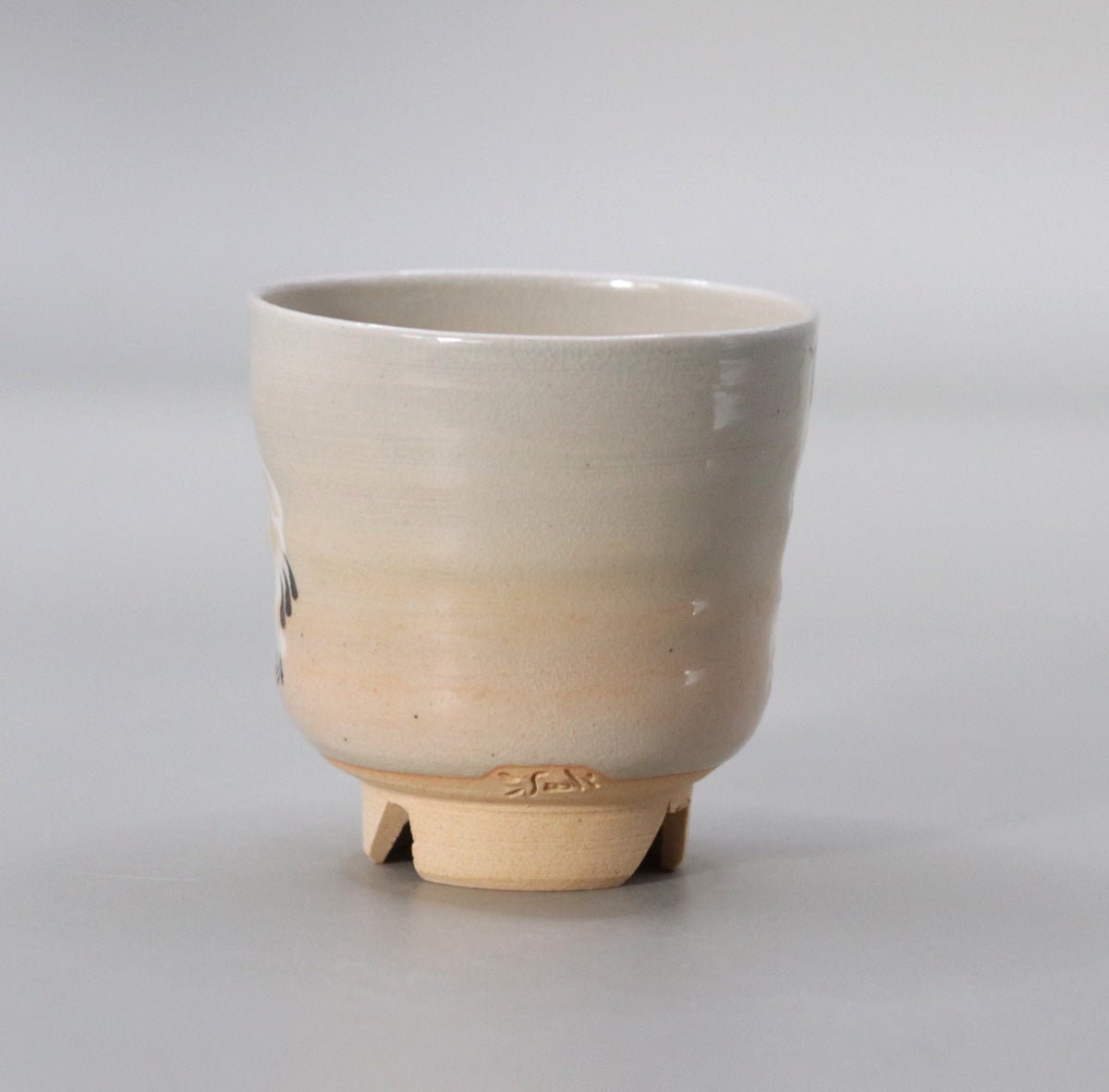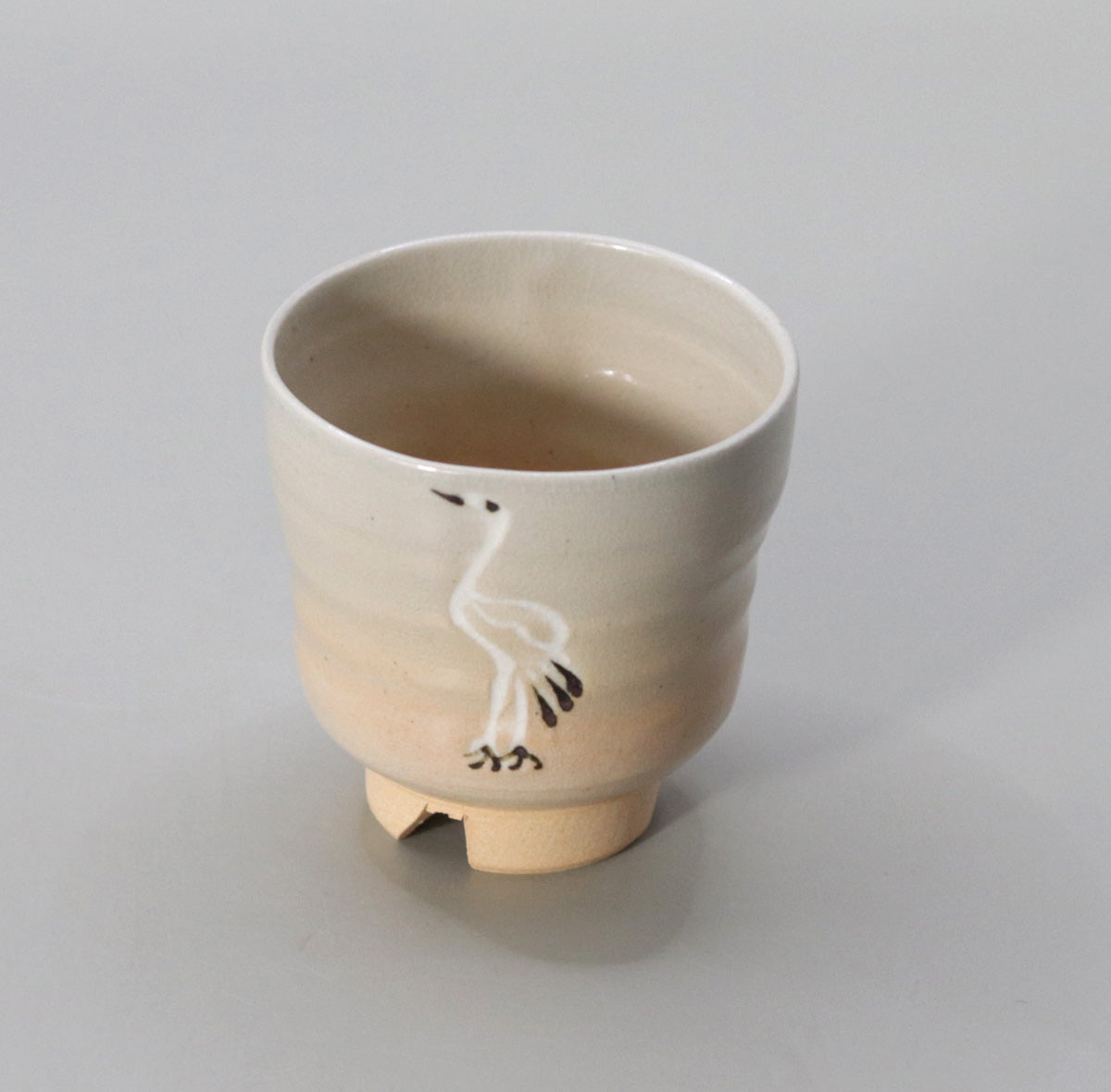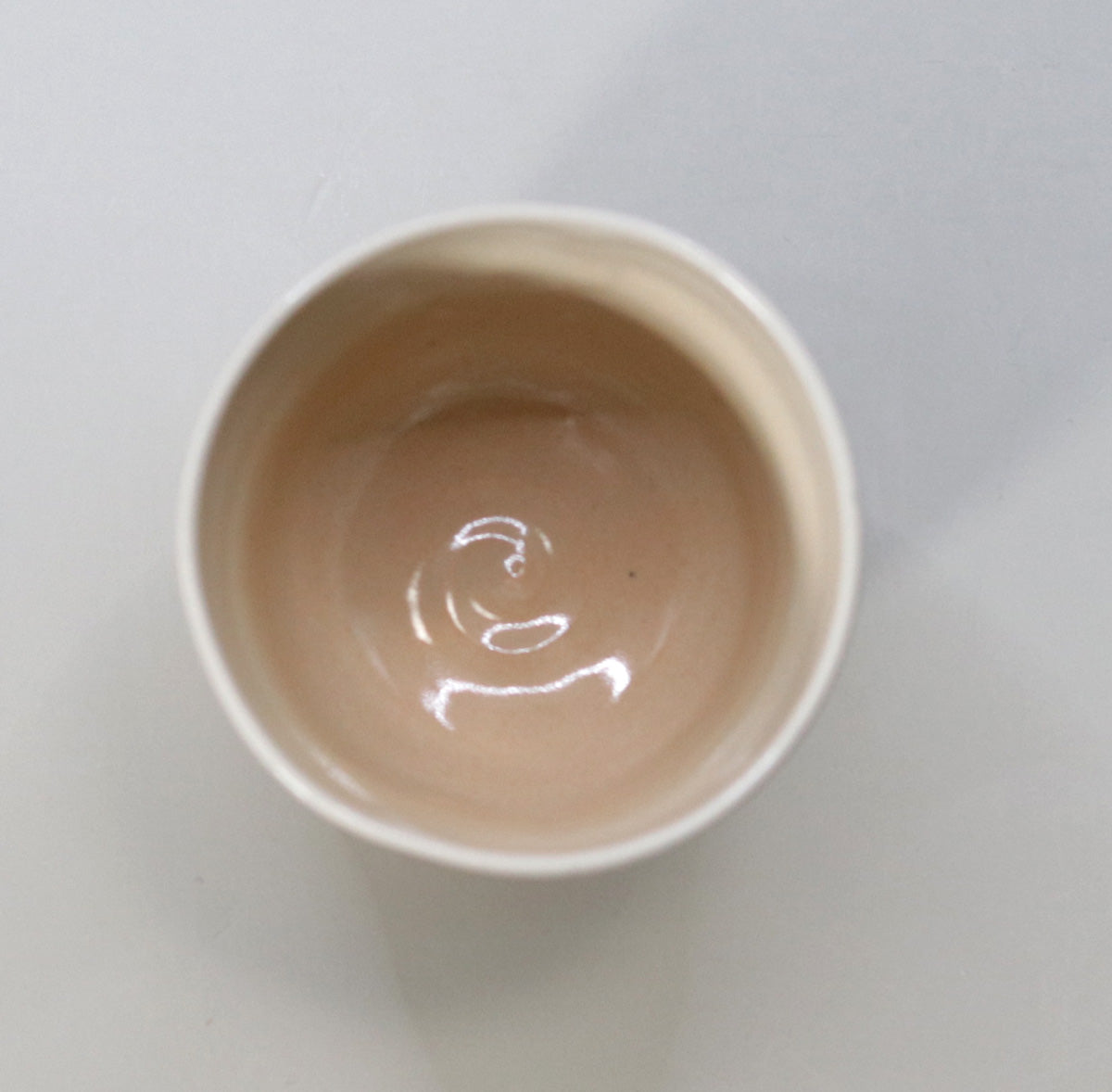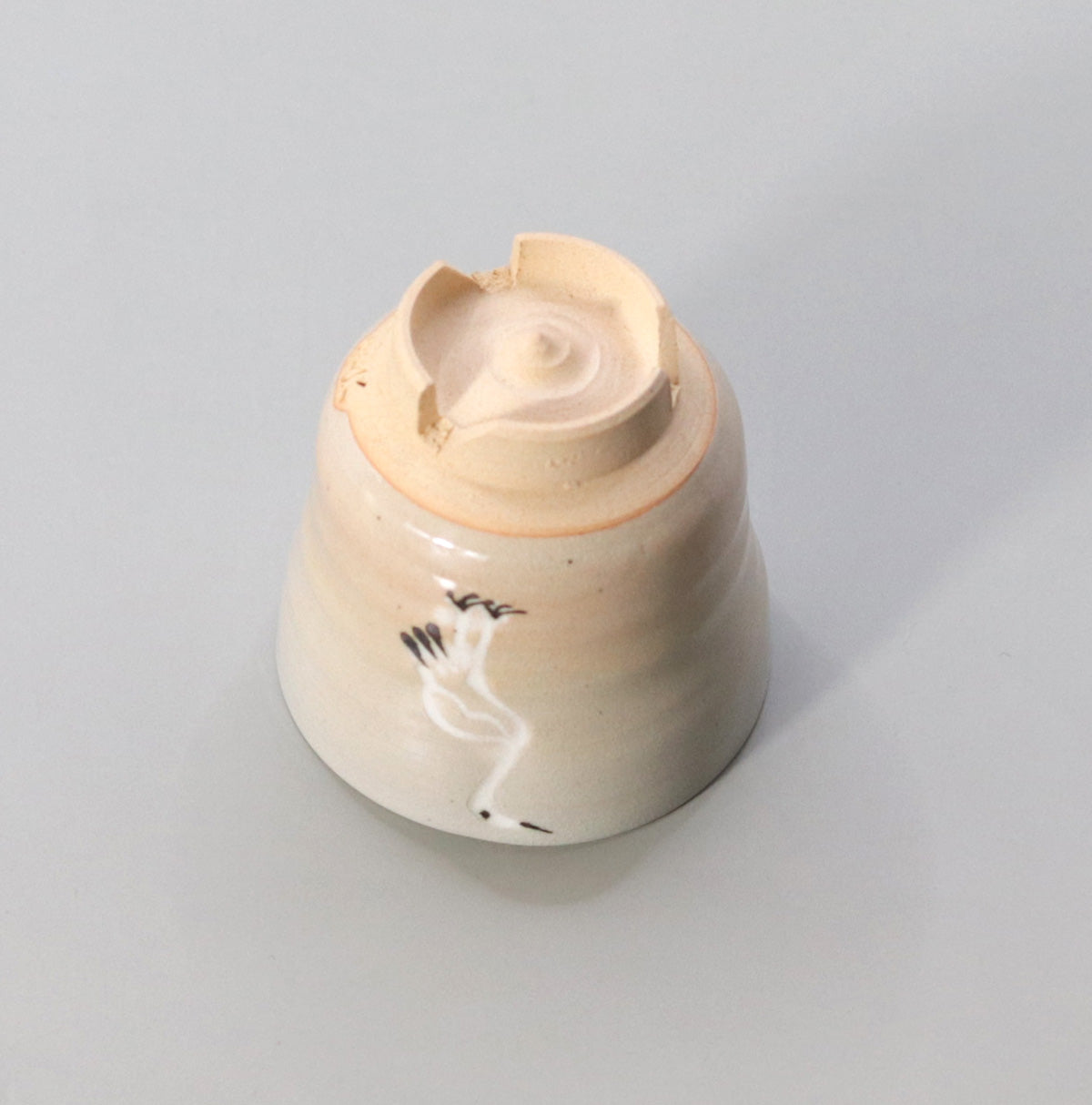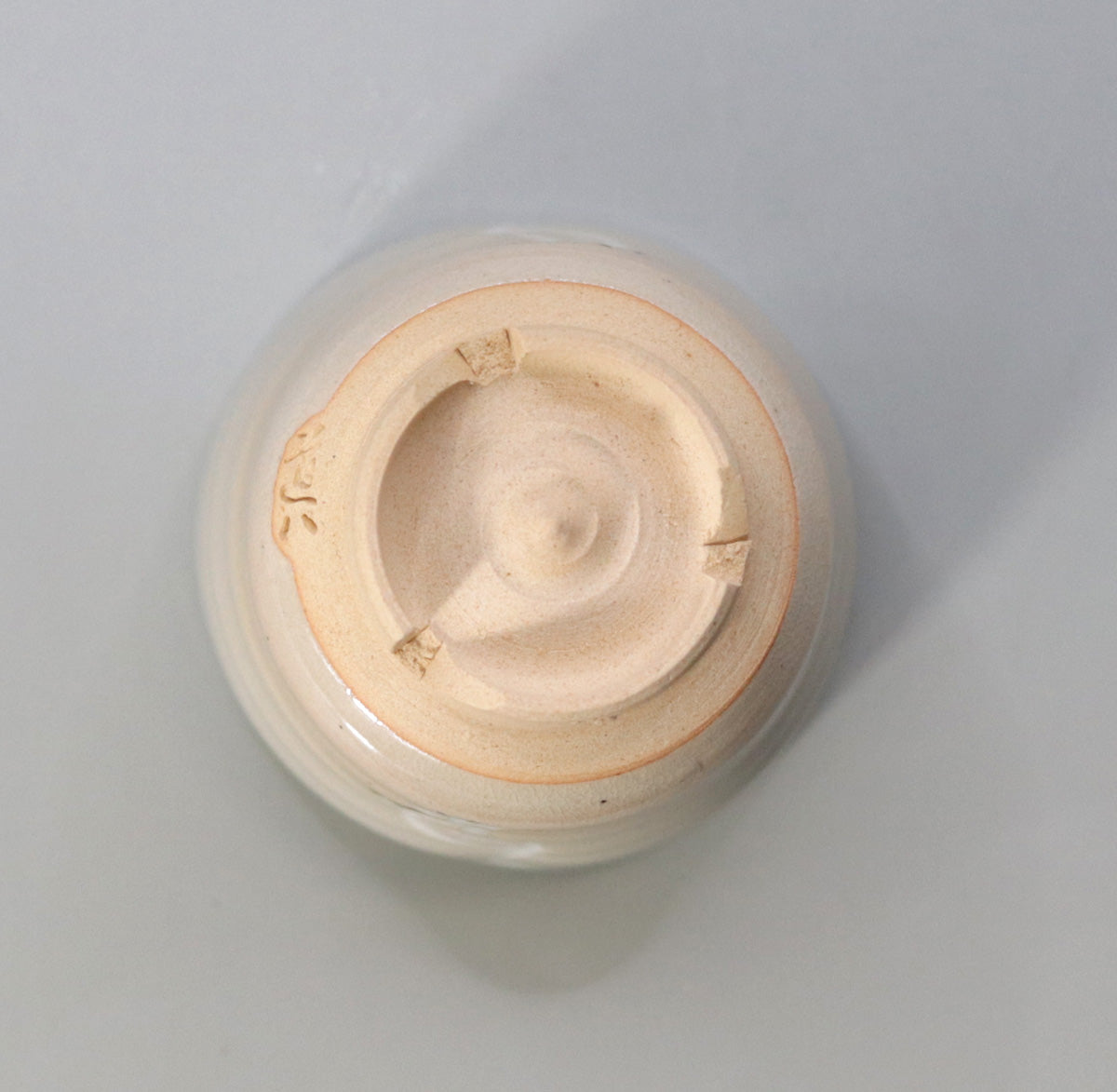Sake cup with standing crane by Takahashi Dohachi
Sake cup with standing crane by Takahashi Dohachi
Couldn't load pickup availability
Width: 5.36cm Height: 5.19cm
Standing crane sake cup - Takahashi Michihachi, 9th generation
1. Beauty of form - The elevated base creates a light and airy appearance
The vessel has a slightly tall cylindrical shape compared to its diameter, with a slightly tapered body, creating an elegant silhouette that fits comfortably in the palm of your hand. The base is cut on three sides into a **warikodai** base, which gives the vessel an air of lightness and float. This "floating feeling" matches the slender shape of the standing crane, creating a dignified presence on the table.
2. Glaze Tone - Snow-like Powdered Glaze and a Subtle Honte
The clay is covered with white enrobing clay and then coated with a transparent glaze in a **Kohiki** finish. The pale pink-beige "Gohon" pattern created by reduction firing is faintly visible on the bottom of the body, adding warmth to the white skin. You can enjoy the change in color over time as the fine crazing absorbs sake and turns amber.
3. Design: Standing crane drawn in one stroke
The crane painted on the front of the body is expressed with a minimalist contrast between the white outline and the black iron paint. The standing pose with head held high and one leg folded is a classic pose symbolizing longevity and good fortune. Combined with the lightness of the split base, the sake cup itself takes on the dignity of a flapping crane.
4. Technique: Combination of scraping and iron painting
The outline of the crane is carved using a line engraving technique, in which a layer of clay is applied and then scraped away with a fine brush to expose the base material. A transparent glaze is then applied on top, which softens the outline and allows the white skin to stand out naturally. The black of the beak, tail feathers, and talons is added with iron paint just before the final firing, and is fixed by re-firing. The intricate kiln-handling technique, which allows the contrast between black and white to be achieved in one go, shines through.
5. Historical and cultural background: The auspiciousness of cranes and a high ground
Cranes are believed to live for a thousand years, and have been used to decorate wedding, festival, and New Year's celebratory sake cups since ancient times. Meanwhile, the wari-takadai is a design seen in tea bowls from the Muromachi to Momoyama periods, and is associated with good fortune with the symbols of "opening" and "widening the horizon." This piece combines these two auspicious symbols, and was created as a vessel that will bring good fortune to a drinking party. Takahashi Michihachi is a renowned Kyoto ware color painting artist, but he has also sublimated the essence of simple Japanese pottery, such as kohiki and wari-takadai, into sophisticated shapes, achieving a quality that blends in with the modern drinking scene.
The Takahashi Dohachi family has been known as a prestigious Kyoto ware color painting family since the late Edo period. The ninth generation master graduated from the Department of Clothing Design at Kyoto Bunkyo Junior College, majored in design, and then went on to the Department of Molding and Research at Kyoto Prefectural Ceramic Technical College, and further solidified his technical foundation at the Kyoto Industrial Research Institute.
In 1996, he began to study pottery under his father, Dohachi Yashiro, and began making pottery in earnest.
In 2012, he took on the name of the ninth Takahashi Dohachi.
His style, which combines the sense of form cultivated in clothing design with the traditional techniques of Kyoto ware, has breathed new life into the Dohachi family of pottery and displays a sophistication that stands out in modern tea ceremonies and gallery spaces.
This sake cup, with its standing crane standing majestically against the snow-like powdered glaze and its high base casting a light shadow, is an exceptional piece that evokes the "elegance of silence" both visually and tactilely. When cold sake is poured into it, the clear liquid shines against the white surface, and when hot sake is poured into it, the pale pink of the sake takes on a faint warmth. It is perfect for daily evening drinks, as well as for celebratory occasions and a drink on New Year's Day. Please enjoy this sake for many years to come, and savor the view of the deepening crazing and the outstanding design of Takahashi Michihachi.
Share
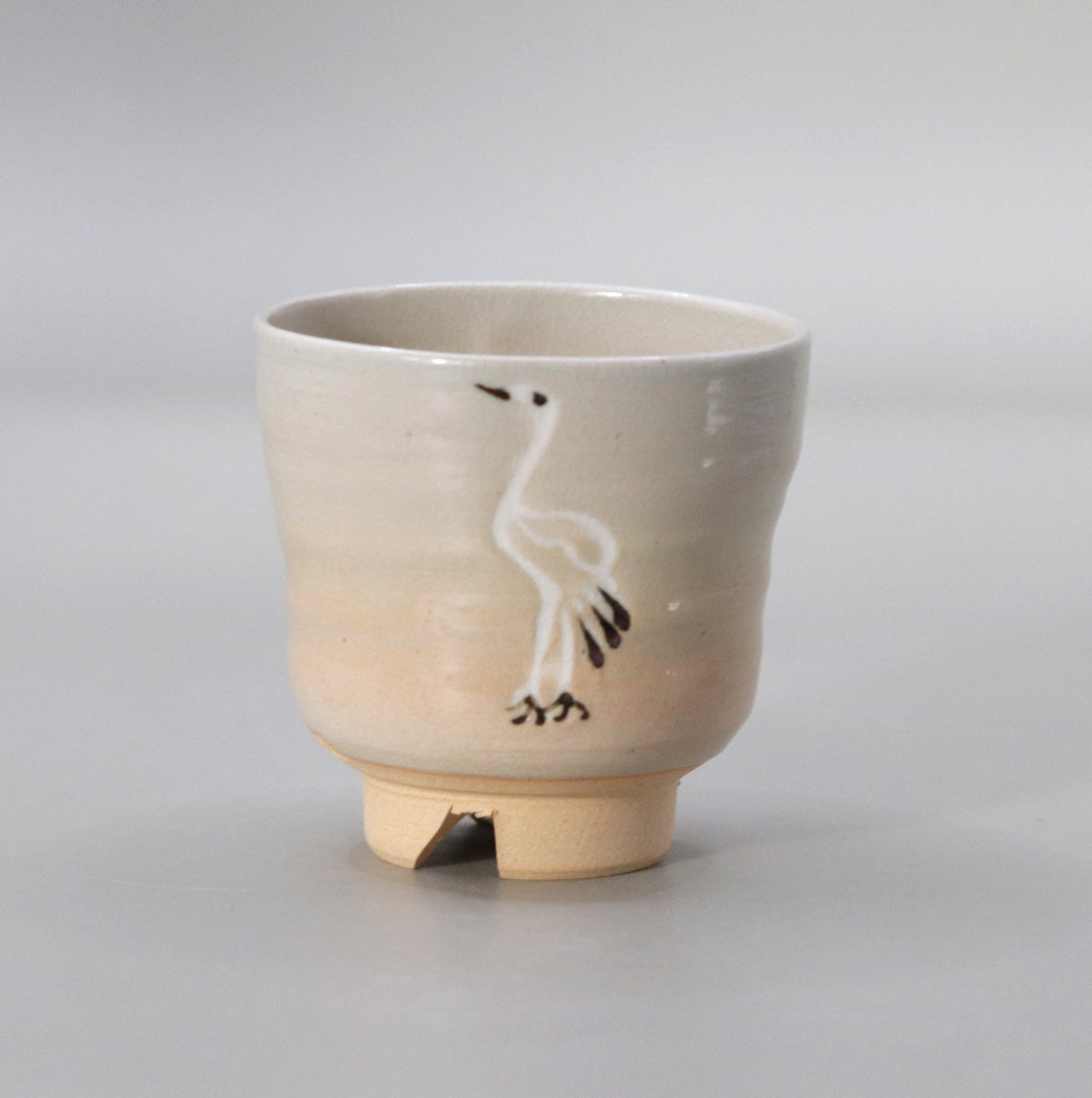
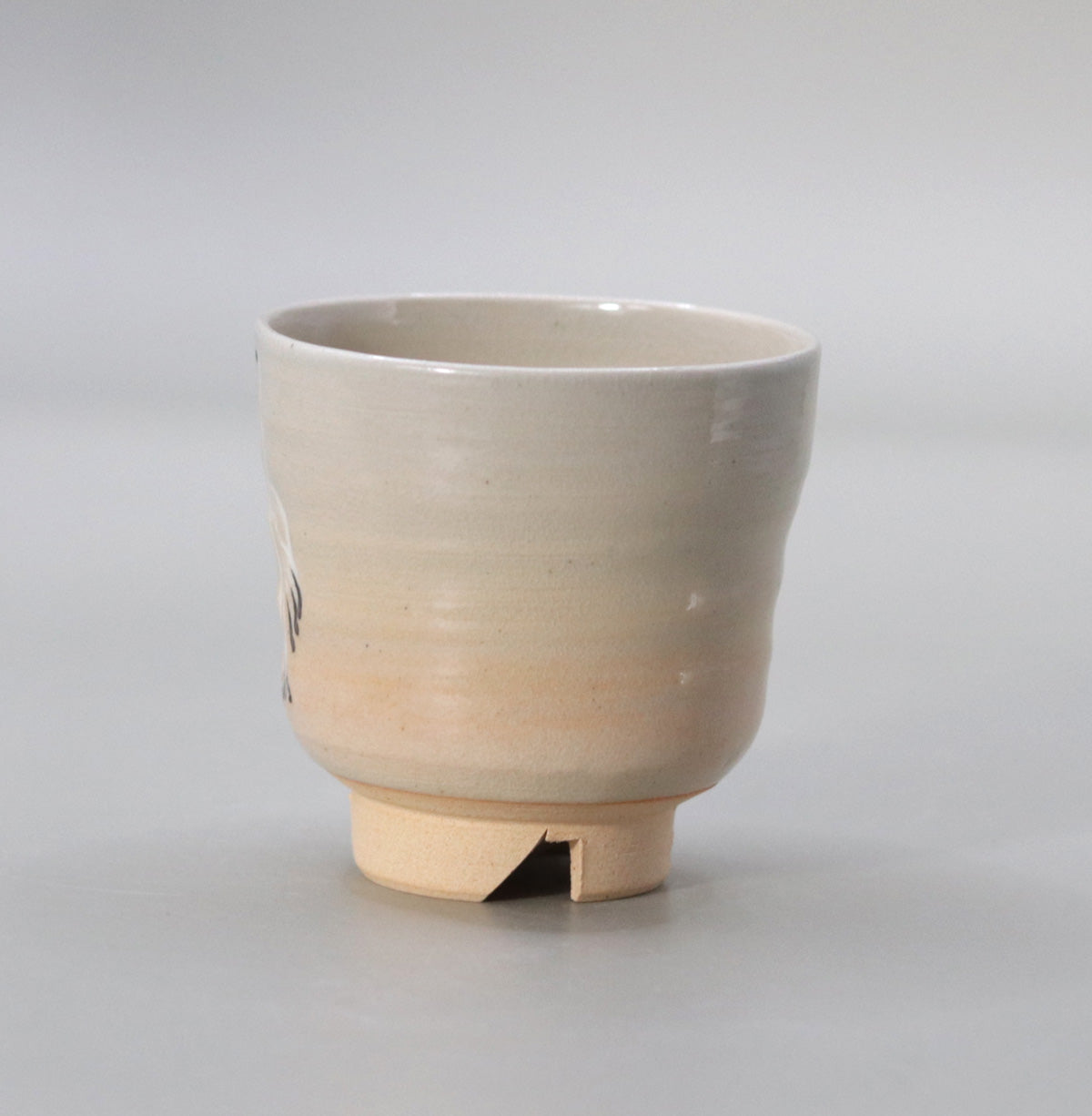
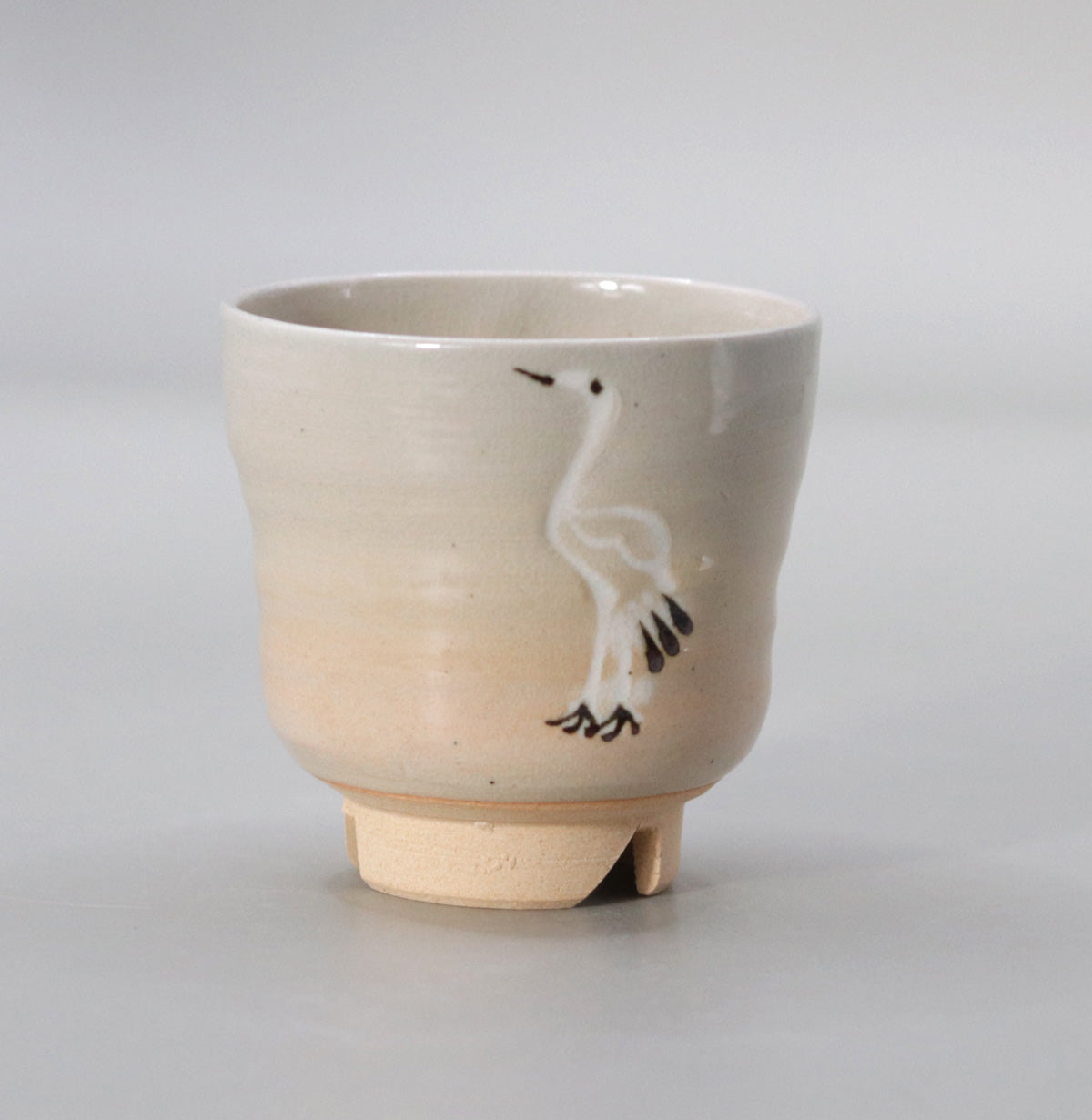
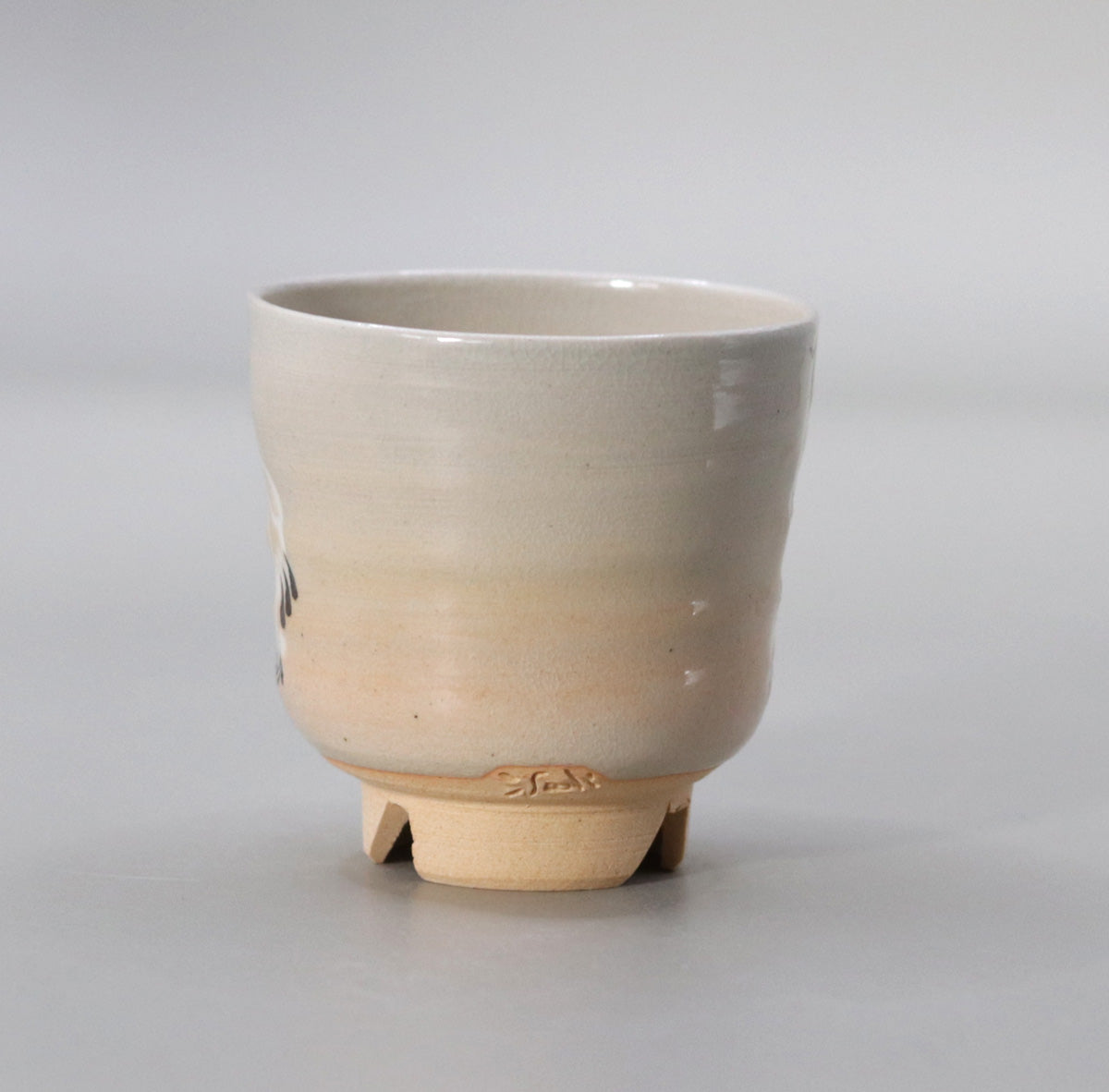
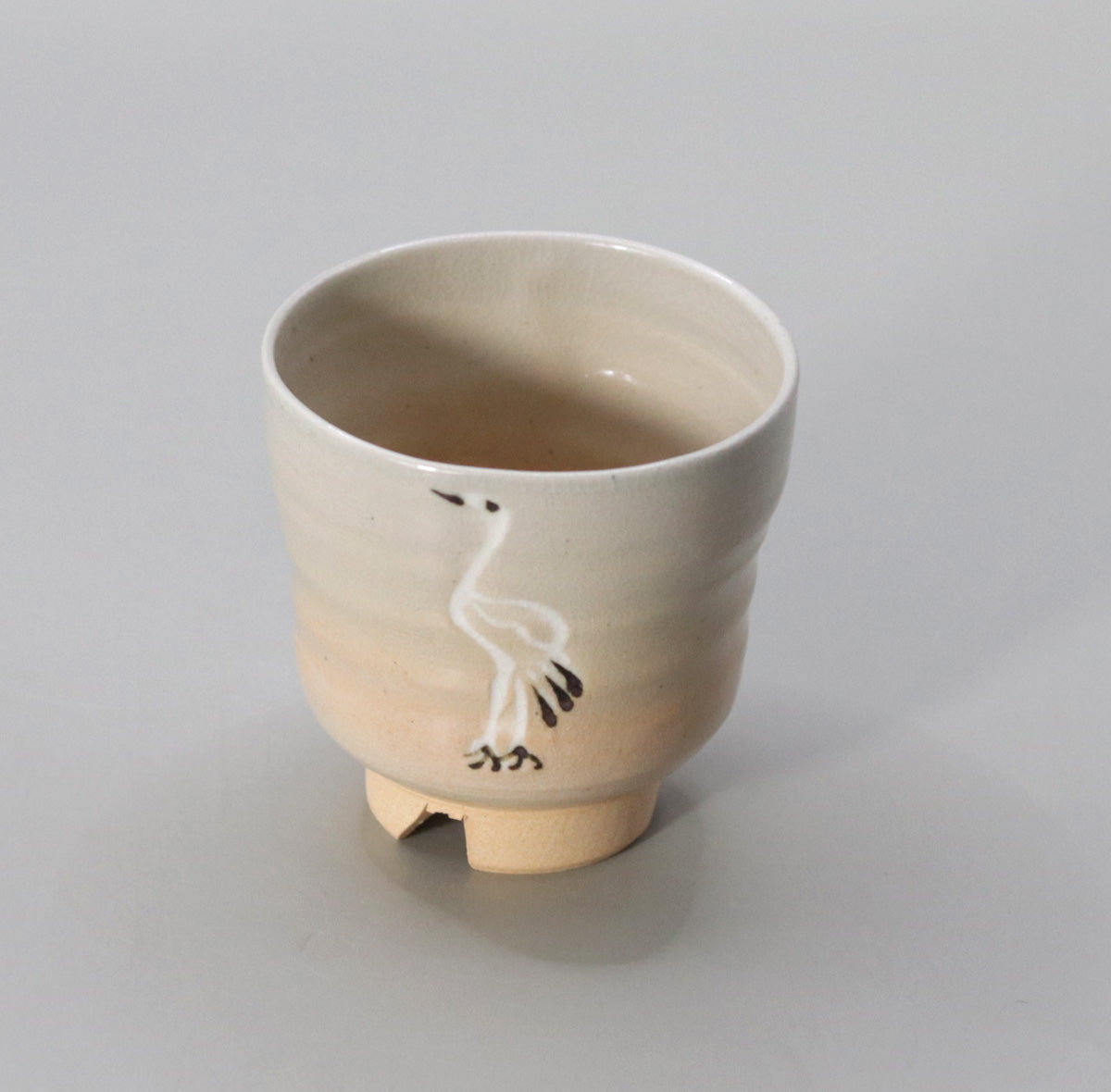
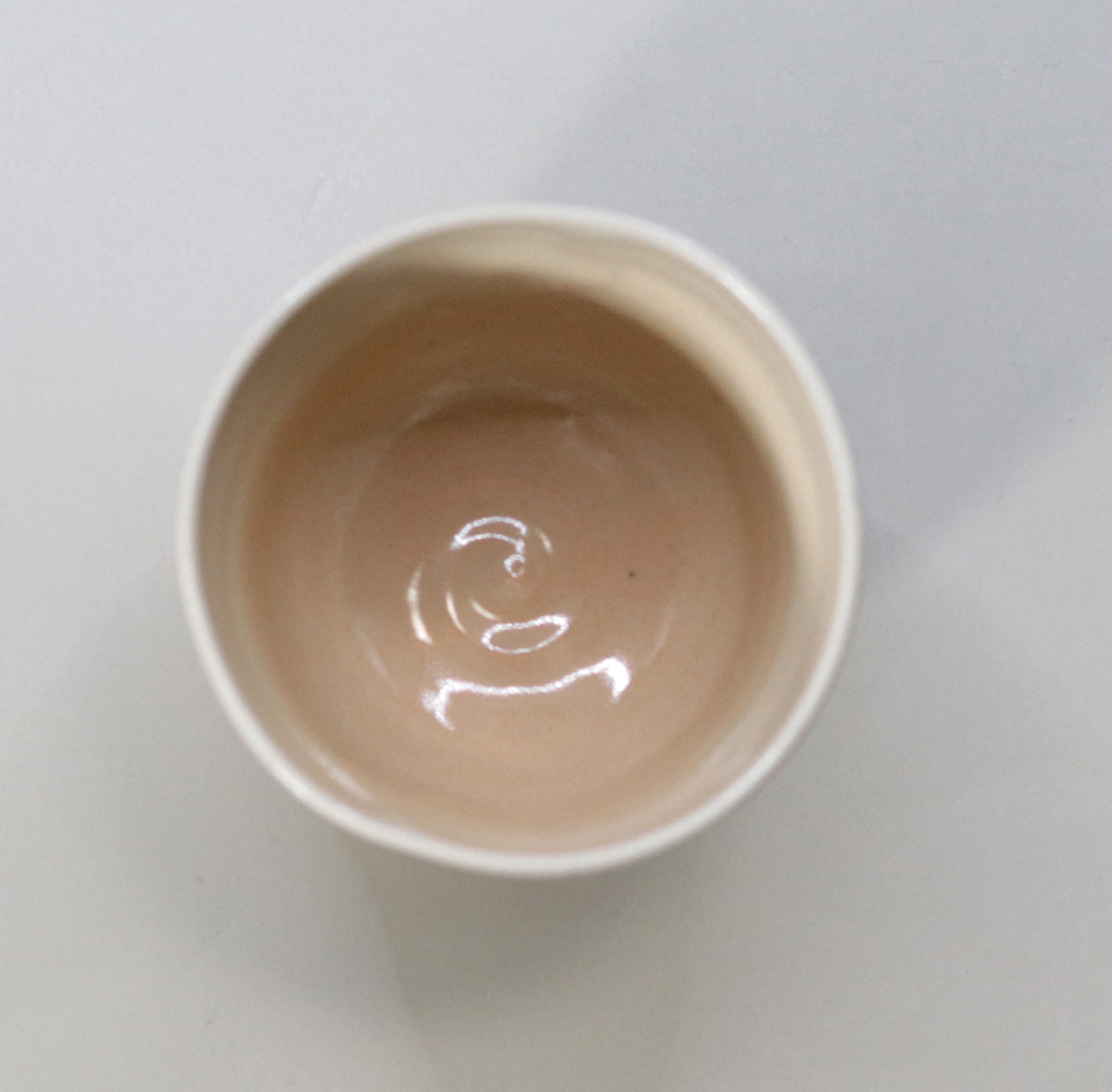
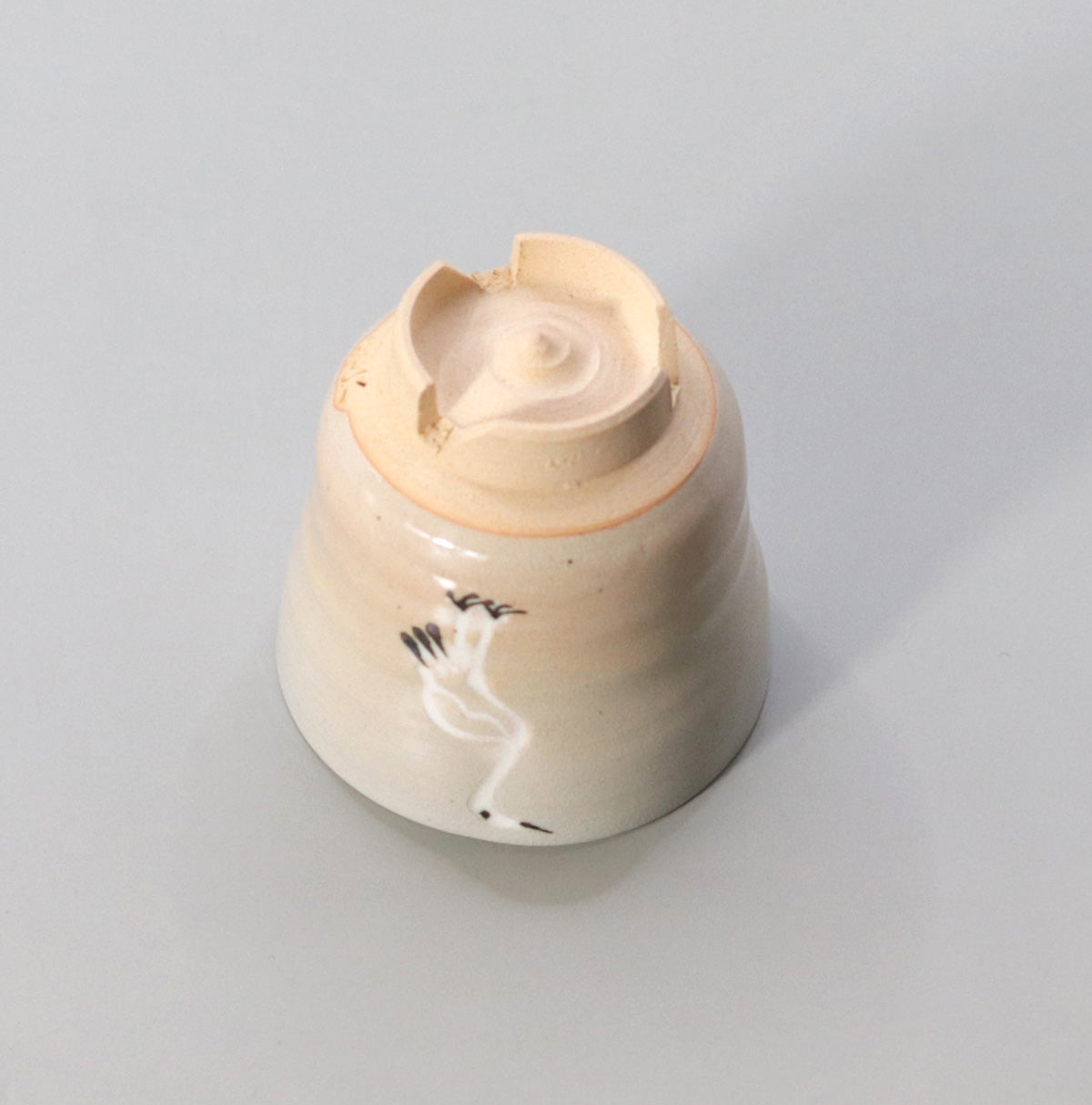
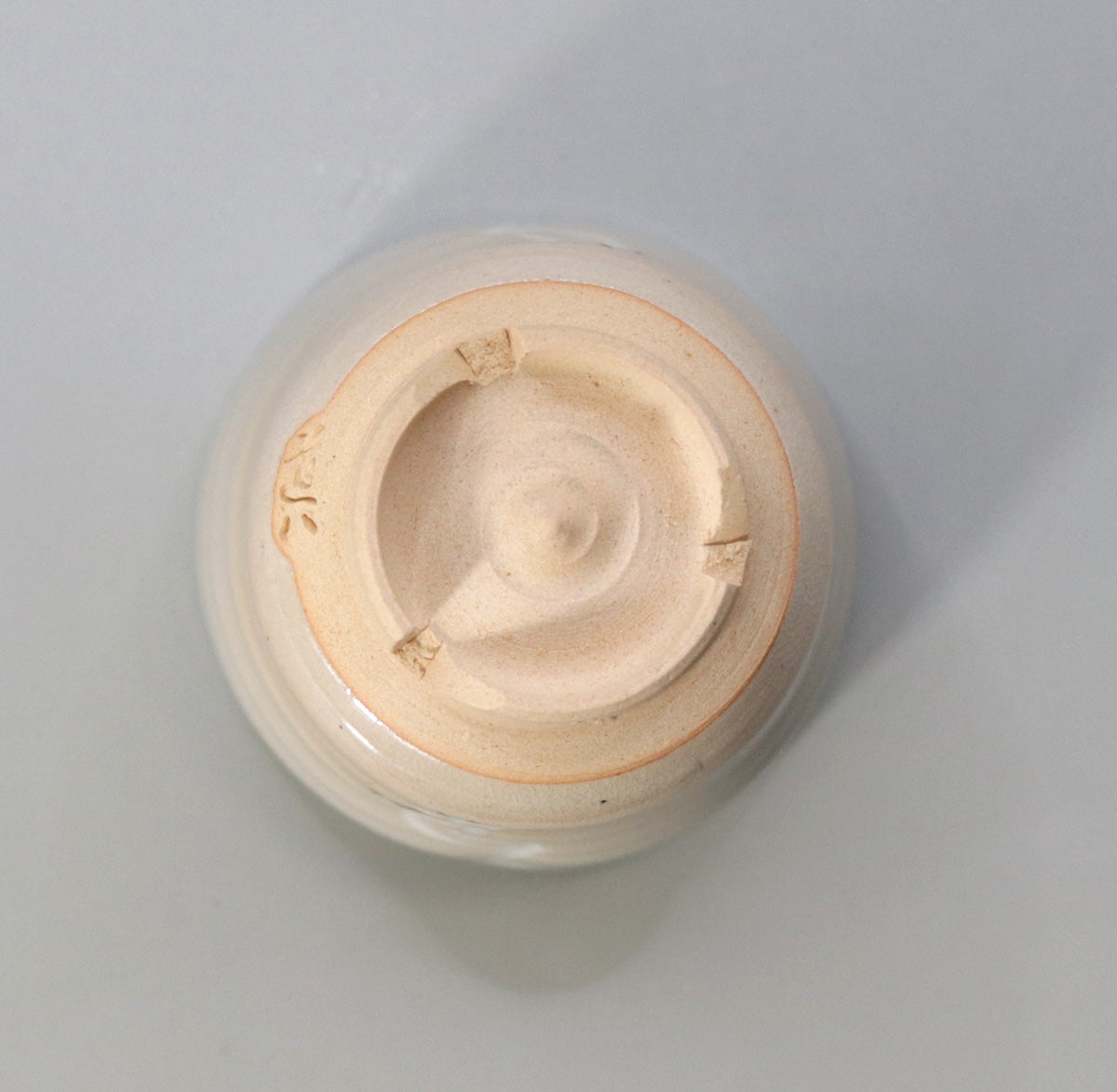
Multi-Column
-
[I will send it to you quickly and carefully]
We carefully package each product in a way that suits it best.
Also, delivery times vary depending on the piece (vessel, etc.).
Items that already come with a box will be shipped within 1-3 days of the order date.
For items that require a box to be made after your order, it will take approximately 30 days for production to be completed and then shipped.
In either case, once we have confirmed your order, we will contact you by email to inform you of the delivery date.
-
[Requests when purchasing pottery]
Even products that look the same may differ slightly in color, shape, size, etc.
The way the glaze is used, the power of the kiln, the firing method, the season, and the humidity also affect the appearance of the pottery.
Please understand the individuality of each piece of pottery and enjoy the unique warmth of handmade.

